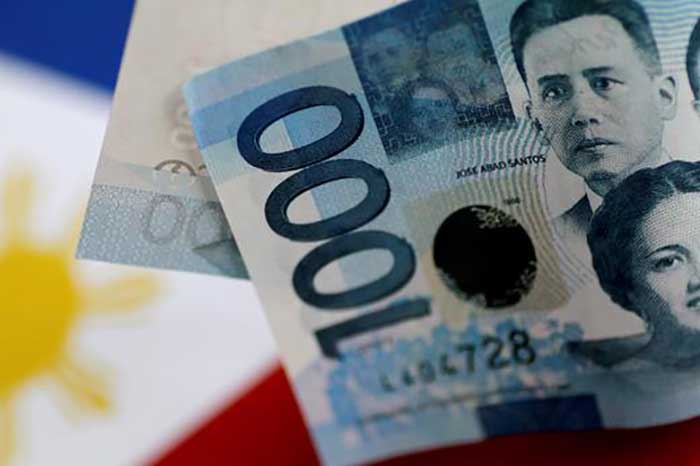Benjamin Diokno, Bangko Sentral ng Pilipinas (BSP) governor, said with a sustainable level of public debt, low debt-to-GDP ratio and steady sources of foreign exchange inflows, the country’s credit ratings are unlikely to be downgraded anytime soon.
“The above facts are strong arguments why the likelihood that the Philippines’ ratings will be downgraded by rating agencies are nil,” Diokno said yesterday.
Last month, Fitch affirmed the country’s investment grade BBB rating, amid a wave of downgrades of many emerging economies. The other major ratings agencies – S&P and Moody’s — also shared the same action.
Fitch cited “economic gains that demonstrate sustained recovery from the COVID-19 crisis” as the basis of its action.
Fitch’s rating affirmation followed the Philippine government’s announcement in January 2022 that the economy expanded by 7.7 percent in the fourth quarter on the back of renewed growth in consumption and investments.
The strong growth in the last quarter of 2021 brought full-year gross domestic product (GDP) growth to 5.6 percent, exceeding the target range of 5 to 5.5 percent and reversing the recession in 2020.
The Philippines has maintained the same rating from Fitch and other credit rating agencies throughout the pandemic, despite a wave of rating downgrades for many other countries during the same period.
Diokno said the gross international reserves “are ample, equivalent to more than 10 months-worth of imports of goods and services.”
“The received doctrine is that 3 months-worth of imports and services are sufficient,” Diokno said.
The central bank chief also stressed that the Philippines has “steady sources of foreign exchange inflows from overseas Filipino remittances, BPO receipts, exports earnings and surging foreign direct investments.”
Diokno also stressed that the perceived action of the US Federal Reserve could affect the currencies of both developed, emerging and developing economies, depending on the level of foreign indebtedness, on the foreign exchange buffers, and prospects for growth and inflation.
“The Philippines is not the typical emerging economy. Our first line of defense is our market determined foreign exchange system where we let the supply-demand dynamics determine the exchange rate, subject to BSP’s participation only to smoothen the fluctuations,” Diokno said.
He said the P12.03 trillion government debt shouldn’t be a cause for concern.
“The common misconception is that the absolute level of the public debt matters. It shouldn’t be. What matters is the level of public debt as percent of the size of the economy (or GDP), whether public debt is sustainable, and whether public borrowings were justified,” Diokno said.
He explained that the public debt-to-GDP ratio prior to the pandemic was 39.6. It rose to roughly 61 percent as a result of the pandemic. It is 70 percent local and 30 percent foreign.
The domestic debt includes the zero interest P300 billion in provisional advances by the BSP to the national government (NG); this is lower than the similar loan the NG received from the BSP worth P540 billion. BSP expects that the provisional advances will be fully settled by endJune 2022.
By international comparison, a debt-to-GDP of 61 percent is manageable, Diokno said.
“At its current ratio, the public debt is quite manageable. The country can easily outgrow its debt since we expect the Philippine economy to grow much faster than its debt. Put differently, the denominator (nominal GDP) is going to grow much faster than the numerator (nominal level of debt),” he added, stressing that the Philippines’ debt-to-GDP ratio at 61 percent “is much lower than that of other countries.”
According to Diokno, the increase in public debt was due largely to the pandemic and the higher spending for the Build, Build, Build program.
“As a result of the pandemic, the economy contracted. As a result, government revenues plummeted. At the same time, the government has to increase spending to finance new programs, such as, the hiring of more medical personnel, purchase of drugs and medicine, building of additional health facilities, purchases of vaccines, distributing cash and non-cash grants, and others. As a result, budget deficits climb from 3 percent of GDP before the pandemic to about 8.2 percent in 2021. In brief, the government has to borrow money to finance the ballooning budget gap,” he said.
“Think of the counterfactual: had we not done what we did as a nation and invested in the vaccine, we would still be languishing from COVID-19 and the economy would still be in deep slump,” Diokno added.
Risk factors cited by Fitch included the fiscal cost of the government’s COVID-19 response, the challenges arising from the unwinding of stimulus measures, and post-election uncertainty, particularly on the continuity of fiscal and economic policies.
However, the debt watcher was also of the view that the country’s fundamental policy strategies will continue, given the decades-long track record of sound economic performance.




